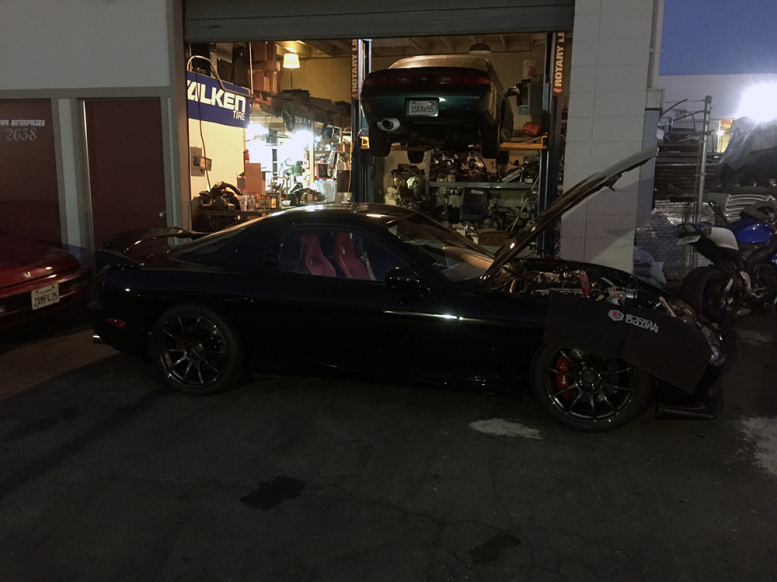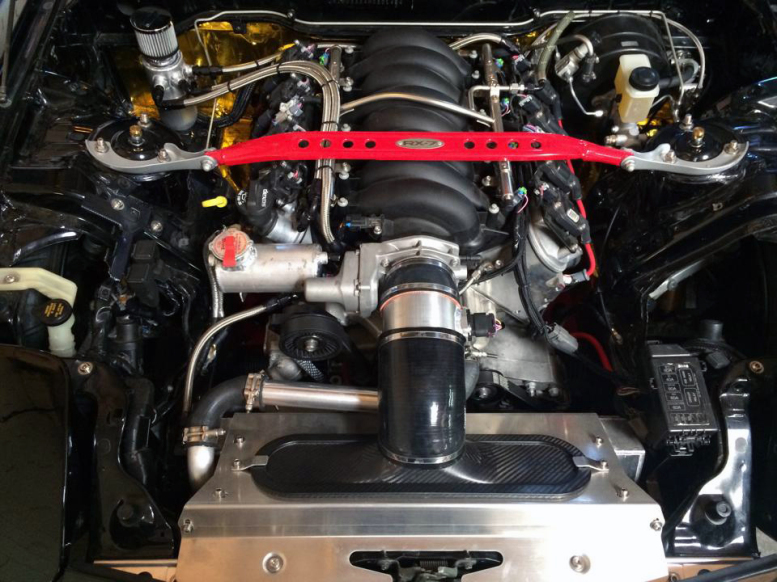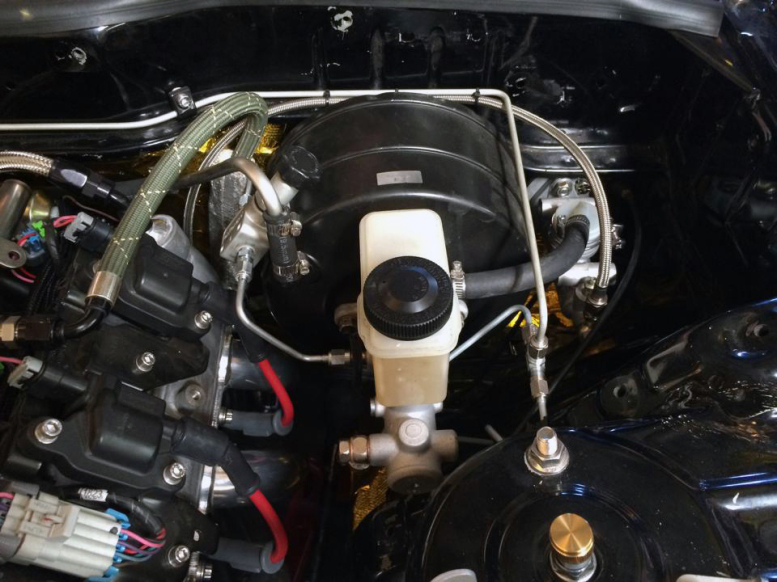Work was measurably amped up during the past couple of weeks to push this swap through the finish line. Once the engine was started and running, attention was turned to ironing out all the minor bugs and any drivability issues. Marcus spent a good deal of time locating and silencing noises and making sure the driveline was solid. Leaks were checked, the tachometer was brought to life, and the swap was technically complete.
After waiting so long, the day I was finally able to pick up the car was quite surreal. It was sensory overload since there was so much to take in, all at once. I had high expectations going in and they were certainly met, it was immediately apparent how cleanly everything was installed and the car starts right up as it should.
The moment of truth came when I got in to drive it for the first time. What a rush that was… the first thing that crossed my mind was how BEASTLY the LS3 sounded and pulled. After the initial HOLY S#!T moments, I quickly adjusted to normalcy and the drive home was remarkably easy, that is until I stopped to get gas.
When I started the car back up, I noticed that the clutch was engaging lower and lower to the floor. After a couple more minutes of driving, it was evident that pressure was being lost in the clutch hydraulics – as if the fluid had boiled over. However, it is virtually impossible to boil RBF600 fluid after 30 minutes of casual driving. I was able to keep the car in gear and limp it back home to my garage. Not quite the triumphant return I was hoping for, but this comes with the territory when you perform such a major swap and shouldn’t overshadow the fact that the other major features of the car performed beautifully. Not bad when you consider the fact that over half of this car was essentially rebuilt during the swap process.
By the next morning, the clutch was usable again so I carefully drove the car back to Marcus. Right around the 30 minute mark of driving is when the clutch starts to lose pressure – after everything in the engine bay comes up to operating temperature. The likely explanation and theory points to the clutch line’s routing as the culprit.
The clutch line was routed upwards and over the master cylinder in order to gain the maximum clearance from the exhaust. In doing so, this works against gravity and can create an air pocket at the top of the line. The clutch line is also a relatively large bore at -4AN, which leaves even more room for an air pocket to form. And of course, since air expands with heat, this would explain why the clutch gets worse as the engine gets hotter.
Since my reunion was prematurely ended and my driving experience with the setup is limited, I will save my commentary on its characteristics for another post – hopefully once everything with the clutch is squared away. To be continued!





